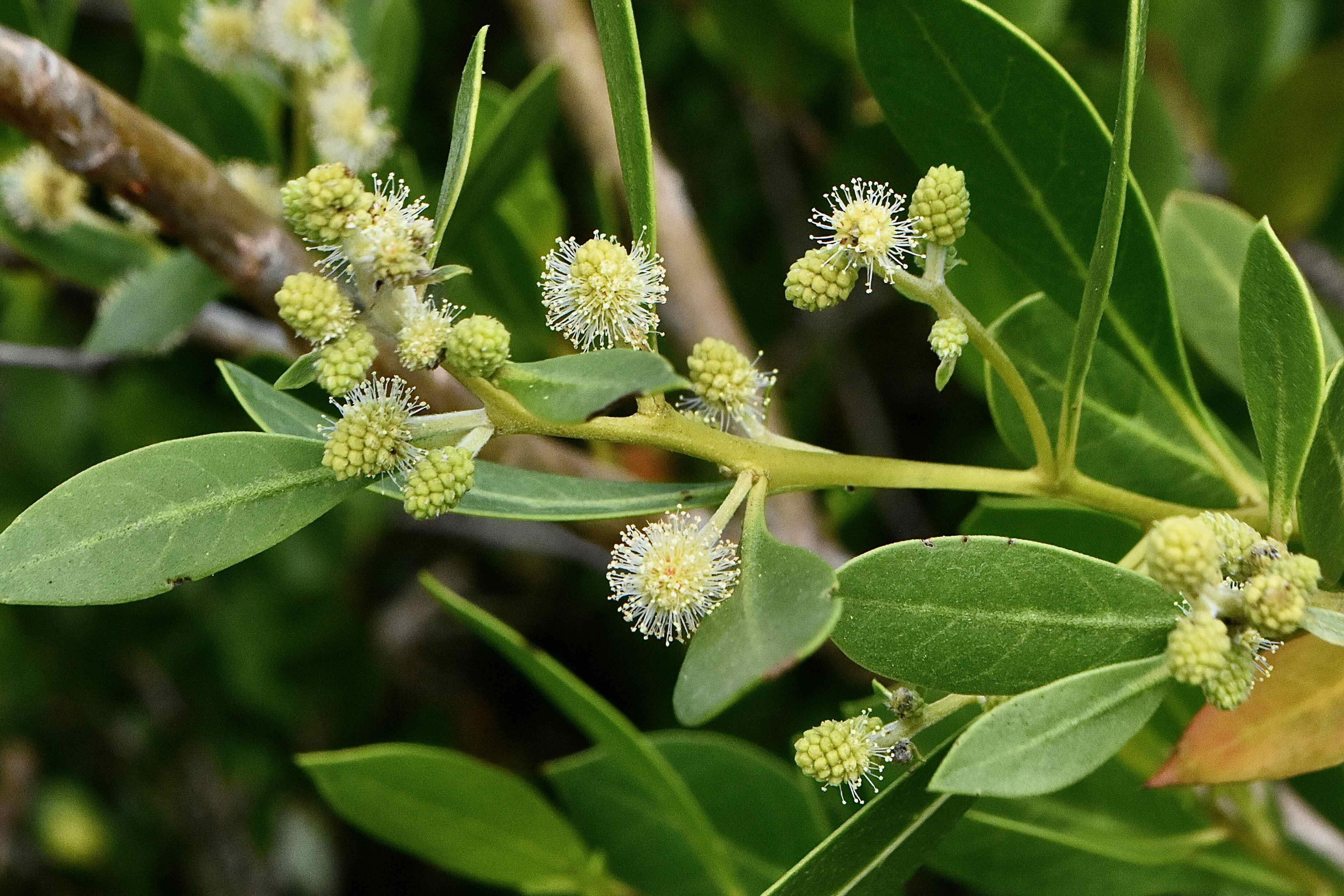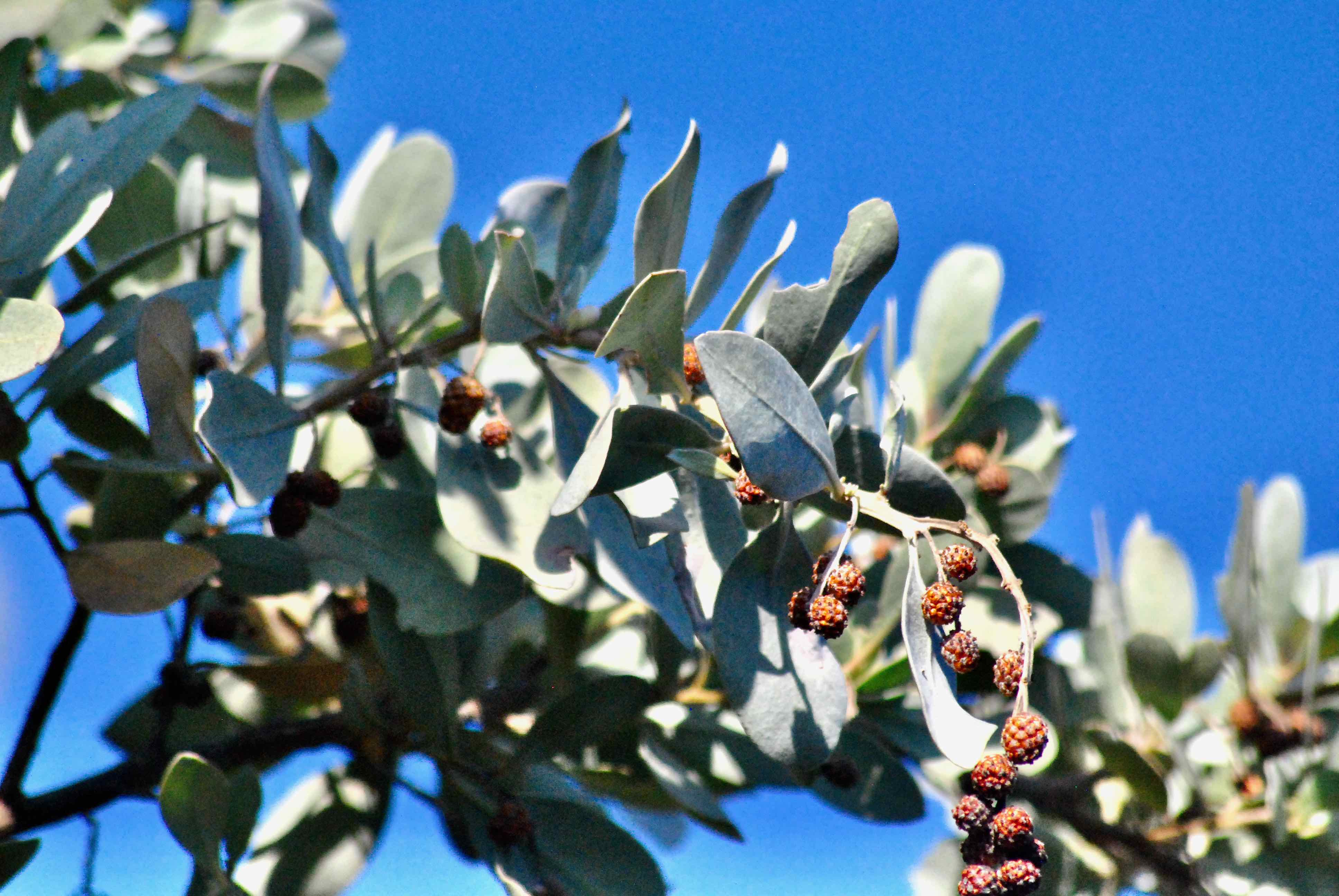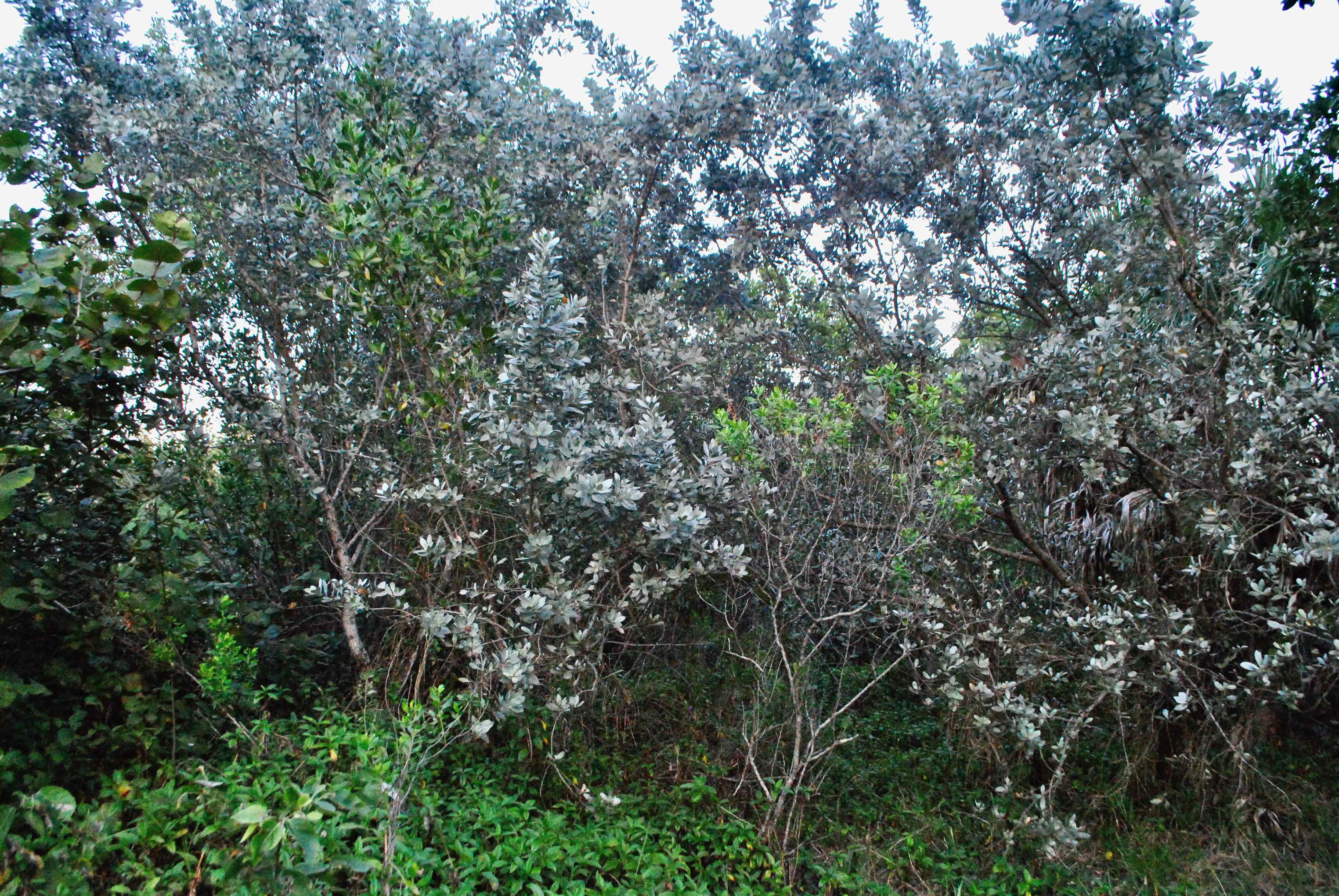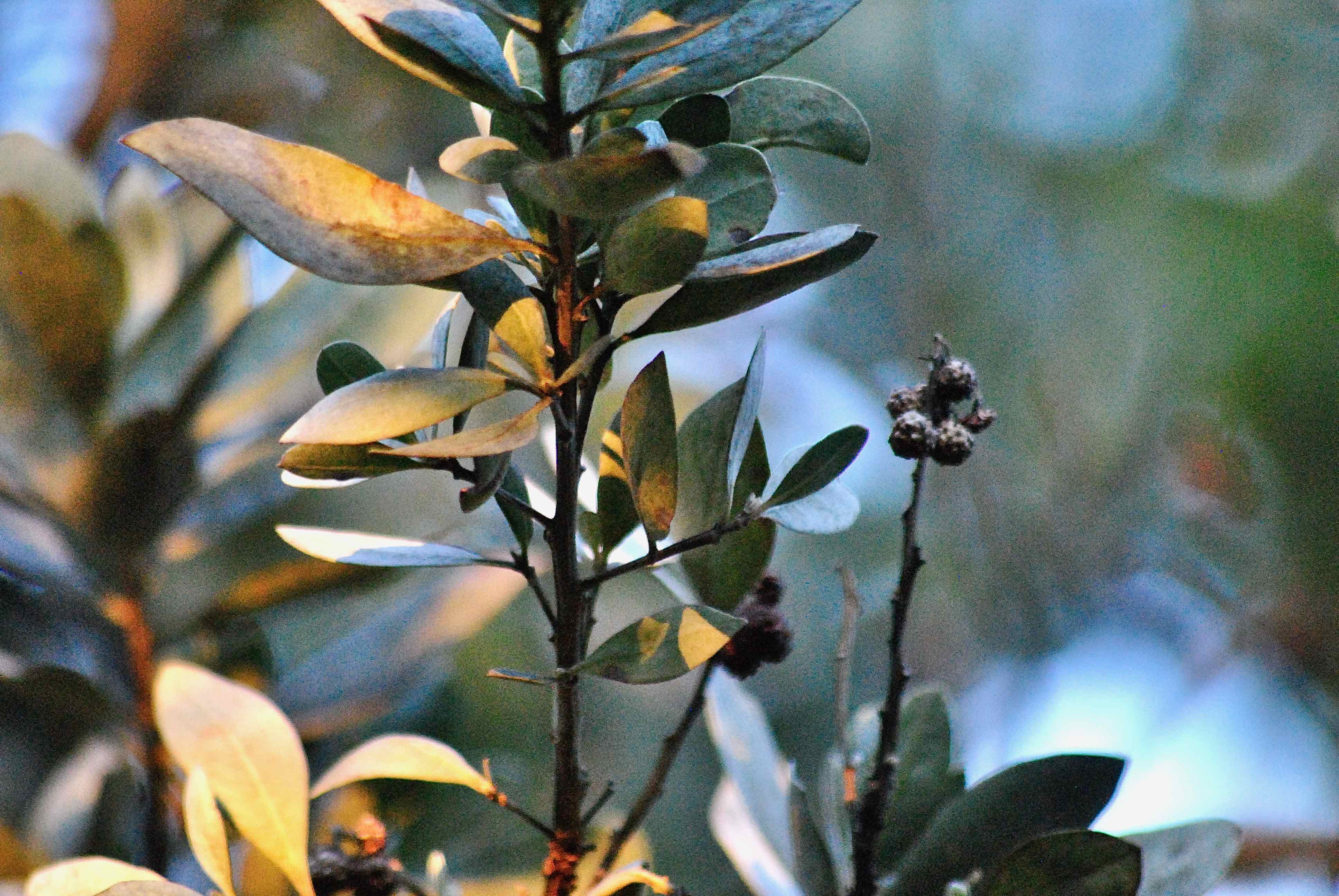
Buttonwood tree, photographed at Hugh Taylor Birch State Park, Fort Lauderdale, Broward County, in February 2025.
The buttonwood tree, Conocarpus erectus, is like the neighborhood kid who spends so much time at your house that he almost becomes family. Almost being the key word.
Buttonwood is found so often in association with mangroves that many consider it a mangrove itself. There is some merit to the argument. In fact the United States Department of Agriculture calls it buttonwood mangrove. Others say there are only three mangroves that grow in Florida, and buttonwood isn't one of them.
In any case, buttonwood is a Florida native found along both the Gulf and Atlantic coasts as far north as Volusia and Levy counties. It's also native to Texas. It is an introduced tree in Hawaii. Also part of its native range: the Caribbean, Central America, South America, the Galapagos Islands and West Africa.
It is a shrubby tree, usually 20 to 40 feet tall but can hit 60 feet. Its bark is scaly and ridged, making it a perfect place for epiphytes to find a home. The leaves are two to four inches long and covered with fine hairs that give the tree a silvery appearance. Buttonwood puts out clusters of small, inconspicuous flowers, males on one tree, females on another. The fruit is purplish-brown cone-like berry. It is commonly found on the landward margins of mangrove swamps. It is cultivated and used in landscaping as an accent planting in coastal areas, as a hedge and as a buffer. It is salt tolerant, not surprising given its niche in nature.

Buttonwood is a host plant for several species of butterflies and moths, including the martial hairstreak. It is a source of nectar for others.
The wood is dense and it was frequently used as fire wood and to make charcoal. It burns slowly and gives off a lot of heat, making it perfect for smoking meats and fish. It was also used in cabinet-making.
In Mexico, buttonwood has been used to make fencing as well as firewood, so much so that whole areas have been stripped bare of the tree. The Seminoles used buttonwood to make dye as well as fuel for barbecuing.
As we said earlier, there is some legitimacy to claiming buttonwood as a mangrove. It is a member of Combretaceae, the white mangrove family. Of course there are something like 600 species that are members of Combretaceae, most are not mangroves.
Hugh Taylor Birch State Park



